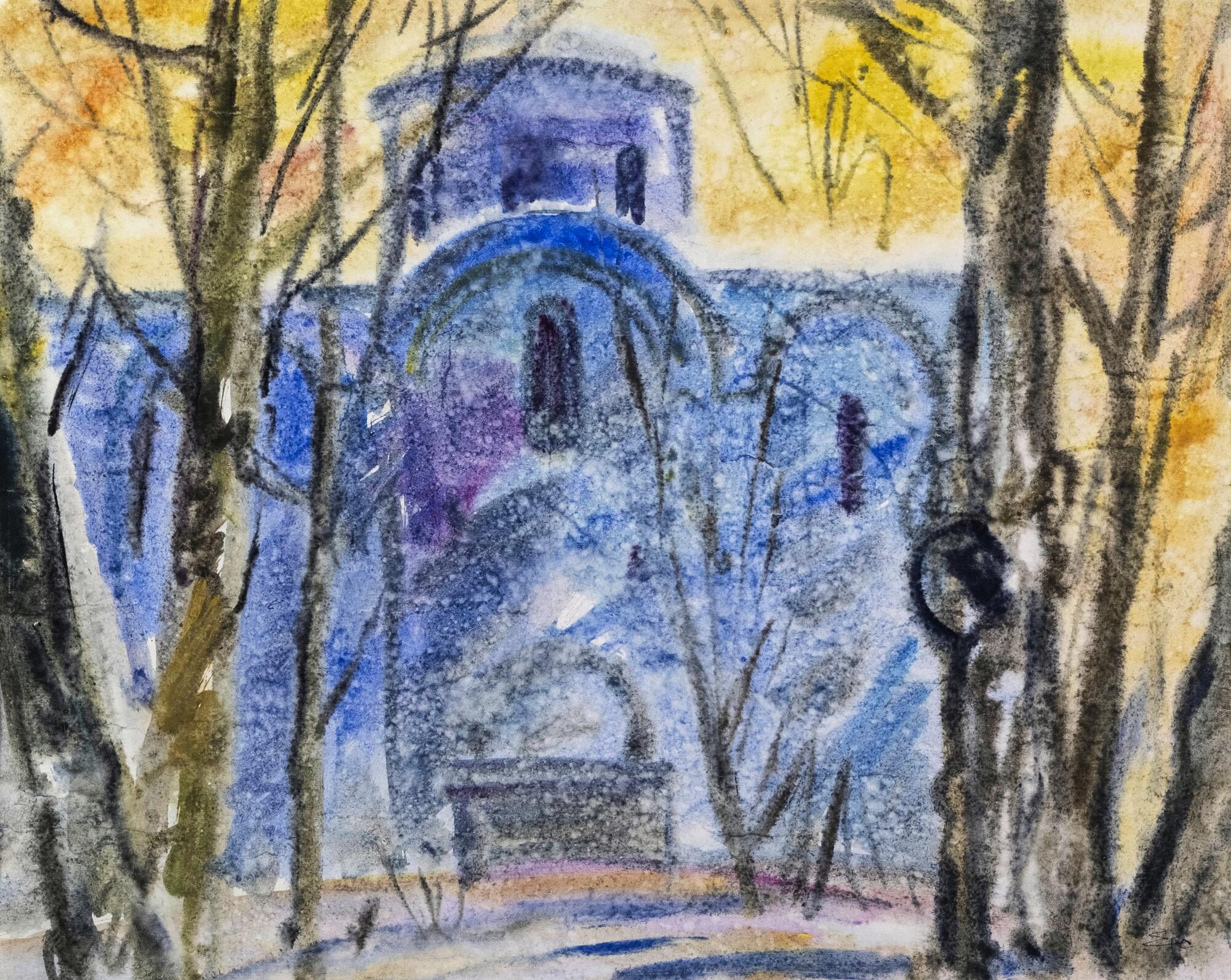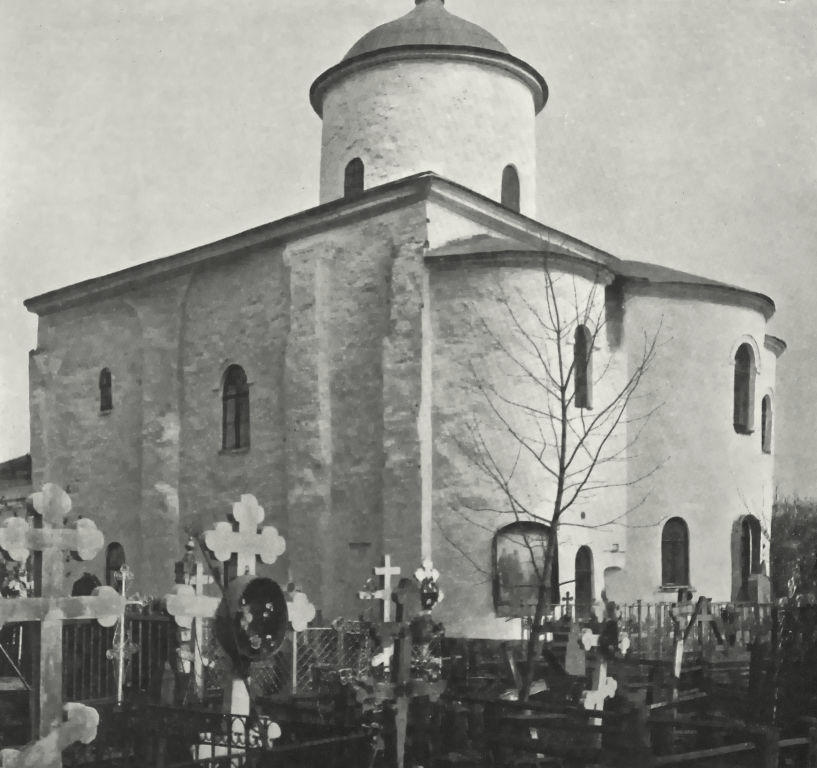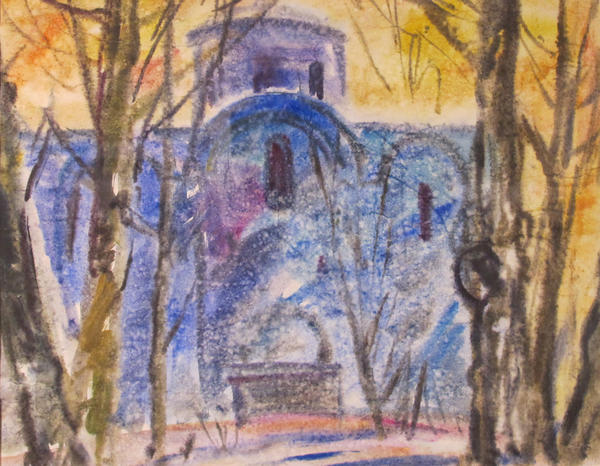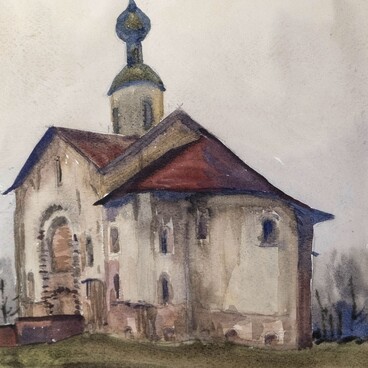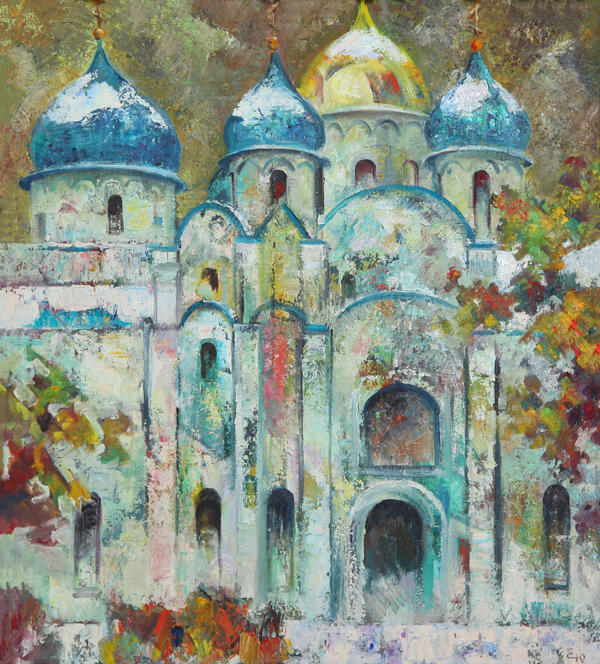The Church of Peter and Paul in Sinichya Gora (Hill) is the only extant building of the now defunct Peter and Paul Monastery on Silnishche. It is possible that an older monastery previously stood on that site, but there is no information about it.
The toponym “Silnishche” was first mentioned in the Novgorod First Chronicle, which reports that in 6646 (1138), Novgorodians gathered at Silnishche, alarmed by the news of the return of the exiled prince with the Pskov army. Perhaps the road to Pskov ran in the vicinity of that area.
Vera Pavlovna Strogova, an expert on toponyms of ancient places, believes that the word “Silnishche” was derived from “silo”, a bird trap. Its original meaning was gradually forgotten. Later the word became associated with titmice that inhabited that area and was understood to mean “Titmice Mountain”.
There is little information about the Peter and Paul Monastery. It is known that residents of Lukina Street petitioned for its construction. The inscription on the shrine of St. Charitina of Lithuania, who was a nun at the monastery, indicated the date of its foundation — May 6699 (1185). The date of its completion (1192) and consecration by Archbishop Gregory appears in the chronicle of the Saint Nicholas Cathedral.
This convent was one of the poorest in the city; in 1611 it survived the Swedish invasion, and in 1764 it was abolished. The church continued to operate: in the 19th century a bell tower was attached to it, and a chapel was erected nearby.
The surviving petition of 1728 mentions that the roof was replaced in 1699–1728. Substantial work was carried out in the 1860s with the blessing of Metropolitan of Novgorod Isidore (Nikolsky). Upon the completion in 1868, the church was re-consecrated by Vicar Bishop Seraphim.
According to Grigory Mikhailovich Shtender, earlier reconstructions probably took place in the 16th century as well.
In the early 1920s — 1930s, the church was closed, and the bell tower was demolished. Despite the fact that since 1960 the church has been listed as an architectural monument, and since 1992 it has been included in the UNESCO heritage list, it has deteriorated. In the 21st century, when the monument was in a bad state of disrepair, an order was issued to prepare a restoration plan, and funds were allocated to the Novgorod Museum-Reserve.
Yury Igorevich Yeryshev is a native of Novgorod, a graduate of the Repin Leningrad Institute of Painting, a member of the Artists’ Union of the USSR, a teacher of painting and drawing, and a scholarship holder of the Ministry of Culture of the Russian Federation. His works have been displayed at all-union, republican and international exhibitions.
The toponym “Silnishche” was first mentioned in the Novgorod First Chronicle, which reports that in 6646 (1138), Novgorodians gathered at Silnishche, alarmed by the news of the return of the exiled prince with the Pskov army. Perhaps the road to Pskov ran in the vicinity of that area.
Vera Pavlovna Strogova, an expert on toponyms of ancient places, believes that the word “Silnishche” was derived from “silo”, a bird trap. Its original meaning was gradually forgotten. Later the word became associated with titmice that inhabited that area and was understood to mean “Titmice Mountain”.
There is little information about the Peter and Paul Monastery. It is known that residents of Lukina Street petitioned for its construction. The inscription on the shrine of St. Charitina of Lithuania, who was a nun at the monastery, indicated the date of its foundation — May 6699 (1185). The date of its completion (1192) and consecration by Archbishop Gregory appears in the chronicle of the Saint Nicholas Cathedral.
This convent was one of the poorest in the city; in 1611 it survived the Swedish invasion, and in 1764 it was abolished. The church continued to operate: in the 19th century a bell tower was attached to it, and a chapel was erected nearby.
The surviving petition of 1728 mentions that the roof was replaced in 1699–1728. Substantial work was carried out in the 1860s with the blessing of Metropolitan of Novgorod Isidore (Nikolsky). Upon the completion in 1868, the church was re-consecrated by Vicar Bishop Seraphim.
According to Grigory Mikhailovich Shtender, earlier reconstructions probably took place in the 16th century as well.
In the early 1920s — 1930s, the church was closed, and the bell tower was demolished. Despite the fact that since 1960 the church has been listed as an architectural monument, and since 1992 it has been included in the UNESCO heritage list, it has deteriorated. In the 21st century, when the monument was in a bad state of disrepair, an order was issued to prepare a restoration plan, and funds were allocated to the Novgorod Museum-Reserve.
Yury Igorevich Yeryshev is a native of Novgorod, a graduate of the Repin Leningrad Institute of Painting, a member of the Artists’ Union of the USSR, a teacher of painting and drawing, and a scholarship holder of the Ministry of Culture of the Russian Federation. His works have been displayed at all-union, republican and international exhibitions.
